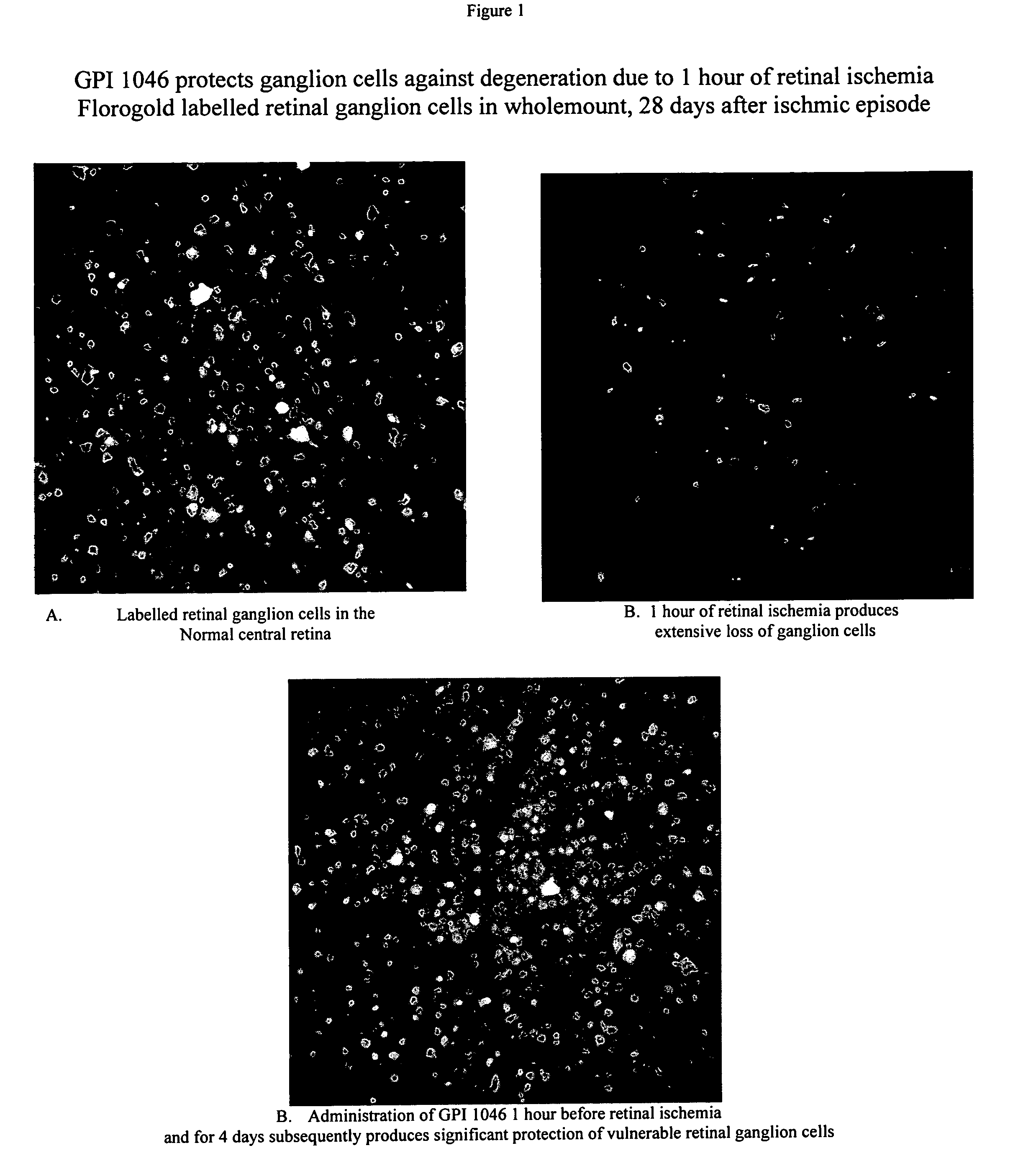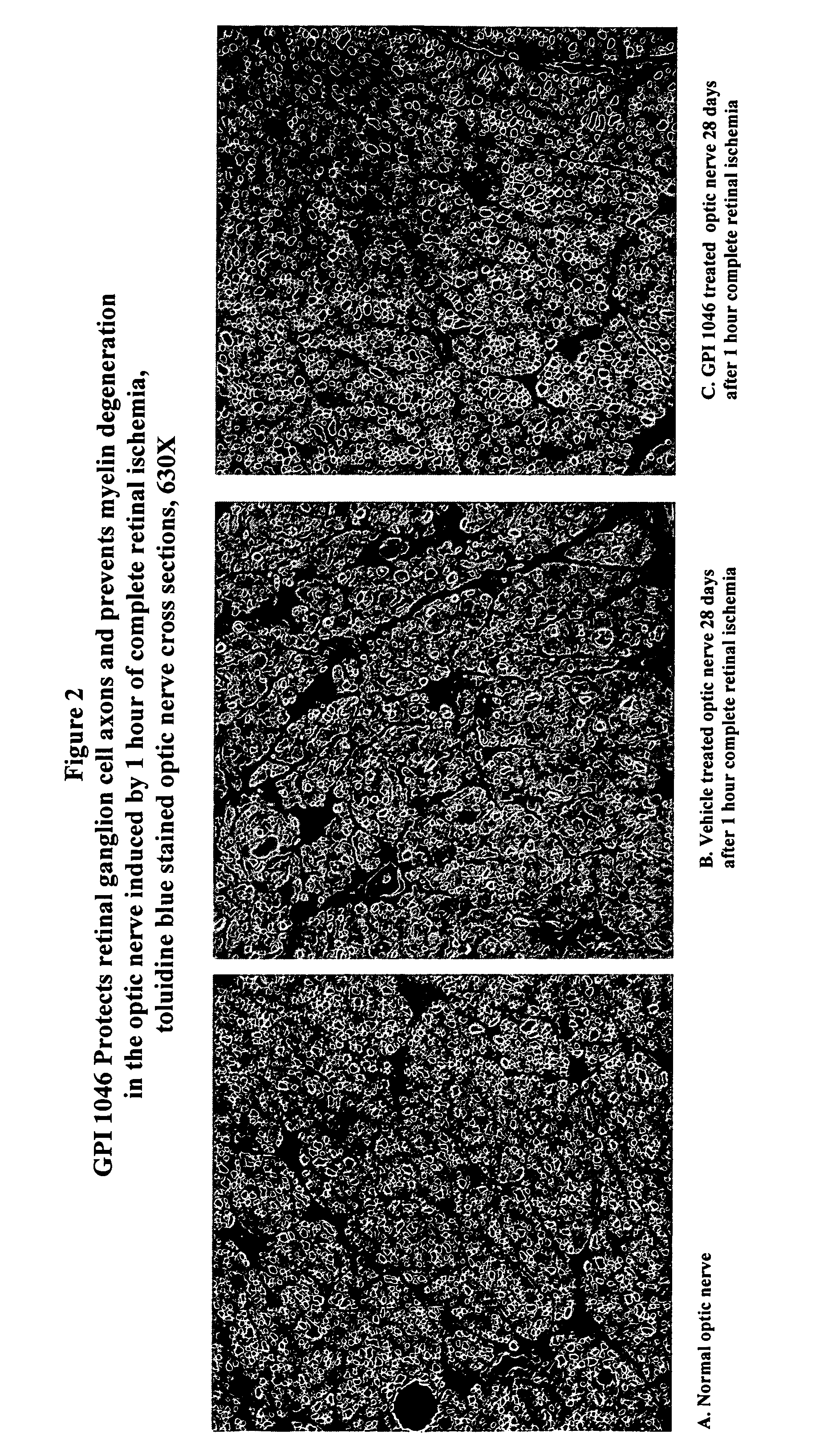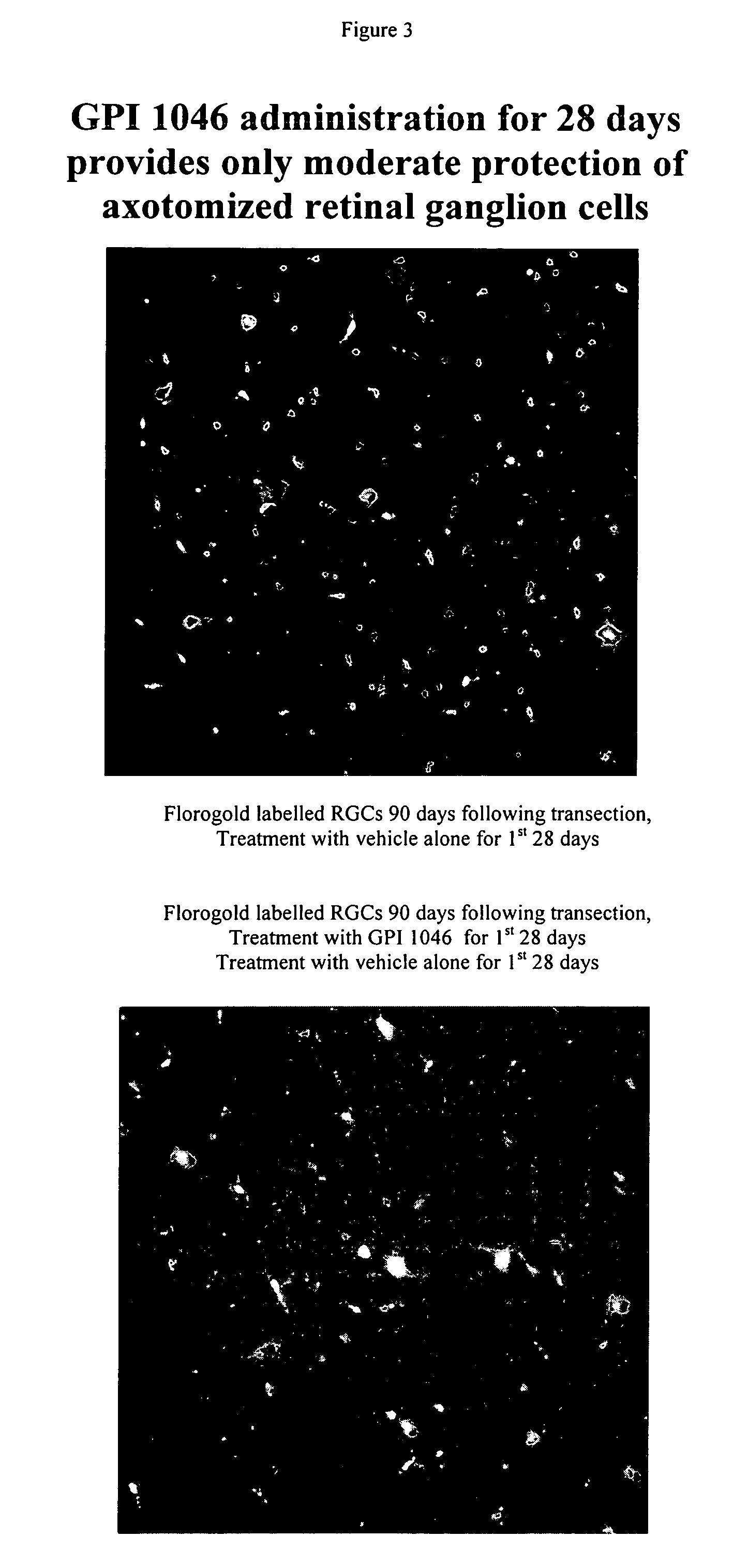Carboxylic acids and carboxylic acid isosteres of N-heterocyclic compounds for vision and memory disorders
a technology of n-heterocyclic compounds and carboxylic acids, which is applied in the direction of immunodeficiency, drug composition, biocide, etc., can solve the problems of limited regeneration capacity, permanent or temporary visual impairment, and limited regeneration capacity, so as to improve vision and enhance memory performance.
- Summary
- Abstract
- Description
- Claims
- Application Information
AI Technical Summary
Benefits of technology
Problems solved by technology
Method used
Image
Examples
example 1
Compound 137
Synthesis of (2S)-1-(3,3-dimethyl-1,2-dioxopentyl)-2-pyrrolidinecarboxylate
a. Synthesis of (2S)-1-(1,2-dioxo-2-methoxyethyl)-2-pyrrolidinecarboxylate.
[0127]A solution of L-proline methyl ester hydrochloride (3.08 g; 18.60 mmol) in dry methylene chloride was cooled to 0° C. and treated with triethylamine (3.92 g; 38.74 mmol; 2.1 eq). After stirring the formed slurry under a nitrogen atmosphere for 15 min, a solution of methyl oxalyl chloride (3.20 g; 26.12 mmol) in methylene chloride (45 mL) was added dropwise. The resulting mixture was stirred at 0° C. for 1.5 hr. After filtering to remove solids, the organic phase was washed with water, dried over MgSO4 and concentrated. The crude residue was purified on a silica gel column, eluting with 50% ethyl acetate in hexane, to obtain 3.52 g (88%) of the product as a reddish oil. Mixture of cis-trans amide rotamers; data for trans rotamer given. 1H NMR (CDCl3): δ 1.93 (dm, 2H); 2.17 (m, 2H); 3.62 (m, 2H); 3.71 (s, 3H); 3.79, 3.8...
example 2
Synthesis of (2S)-1-(1,2-dioxo-3,3-dimethylpentyl)-2-pyrrolidinecarboxamide. (Compound 34)
[0131]Isobutyl chloroformate (20 mmol, 2.7 mL) was added to a solution containing (2S)-1-(1,2-dioxo-3,3-dimethylpentyl)-2-pyrrolidinecarboxylic acid (4.89 g, 20 mmol) (from Example 1) in 50 mL methylene chloride at −10° C. with stirring. After 5 minutes, ammonia was added dropwise (20 mmol, 10 mL of 2 M ethyl alcohol solution). The reaction was warmed up to room temperature after stirring at −10° C. for 30 minutes. The mixture was diluted with water, and extracted into 200 mL methylene chloride. The organic extract was concentrated and further purified by silica gel to give 4.0 g of product as a white solid (81.8% yield). 1H NMR (CDCl3): δ0.91 (t, 3H, J=7.5); 1.28 (s, 6H, each); 1.63–1.84 (m, 2H); 1.95–2.22 (m, 3H); 2.46 (m, 1H); 3.55–3.67 (m, 2H); 4.67 (t, 1H, J=7.8); 5.51–5.53 (br, 1H, NH); 6.80 (br, 1H, NH).
example 3
Synthesis of (2S)-1-(1,2-dioxo-3,3-dimethylpentyl)-2-pyrrolidinecarbonitrile. (Compound 29)
[0132]To a solution of 0.465 mL DMF (6 mmol) in 10 mL acetonitrile at 0° C. was added 0.48 mL (5.5 mmol) of oxalyl chloride. A white precipitate formed immediately and was accompanied by gas evolution. When complete, a solution of 1.2 g (5 mmol) of (2S)-1-(1,2-dioxo-3,3-dimethylpentyl)-2-pyrrolidinecarboxamide (from Example 2) in 2.5 mL acetonitrile was added. When the mixture became homogeneous, 0.9 mL (11 mmol) pyridine was added. After 5 min., the mixture was diluted into water and extracted by 200 mL ethyl acetate. The organic layer was concentrated and further purified by silica gel to give 0.8 g product as a white solid (72% yield). 1H NMR (CDCl3): δ 0.87 (t, 0.3H, J=7.5); 1.22 (s, 3H); 1.24 (s, 3H); 1.80 (m, 2H); 2.03–2.23 (m, 4H); 3.55 (m, 2H); 4.73 (m, 1H).
PUM
| Property | Measurement | Unit |
|---|---|---|
| Electrical conductance | aaaaa | aaaaa |
| Fraction | aaaaa | aaaaa |
| Fraction | aaaaa | aaaaa |
Abstract
Description
Claims
Application Information
 Login to View More
Login to View More - R&D
- Intellectual Property
- Life Sciences
- Materials
- Tech Scout
- Unparalleled Data Quality
- Higher Quality Content
- 60% Fewer Hallucinations
Browse by: Latest US Patents, China's latest patents, Technical Efficacy Thesaurus, Application Domain, Technology Topic, Popular Technical Reports.
© 2025 PatSnap. All rights reserved.Legal|Privacy policy|Modern Slavery Act Transparency Statement|Sitemap|About US| Contact US: help@patsnap.com



